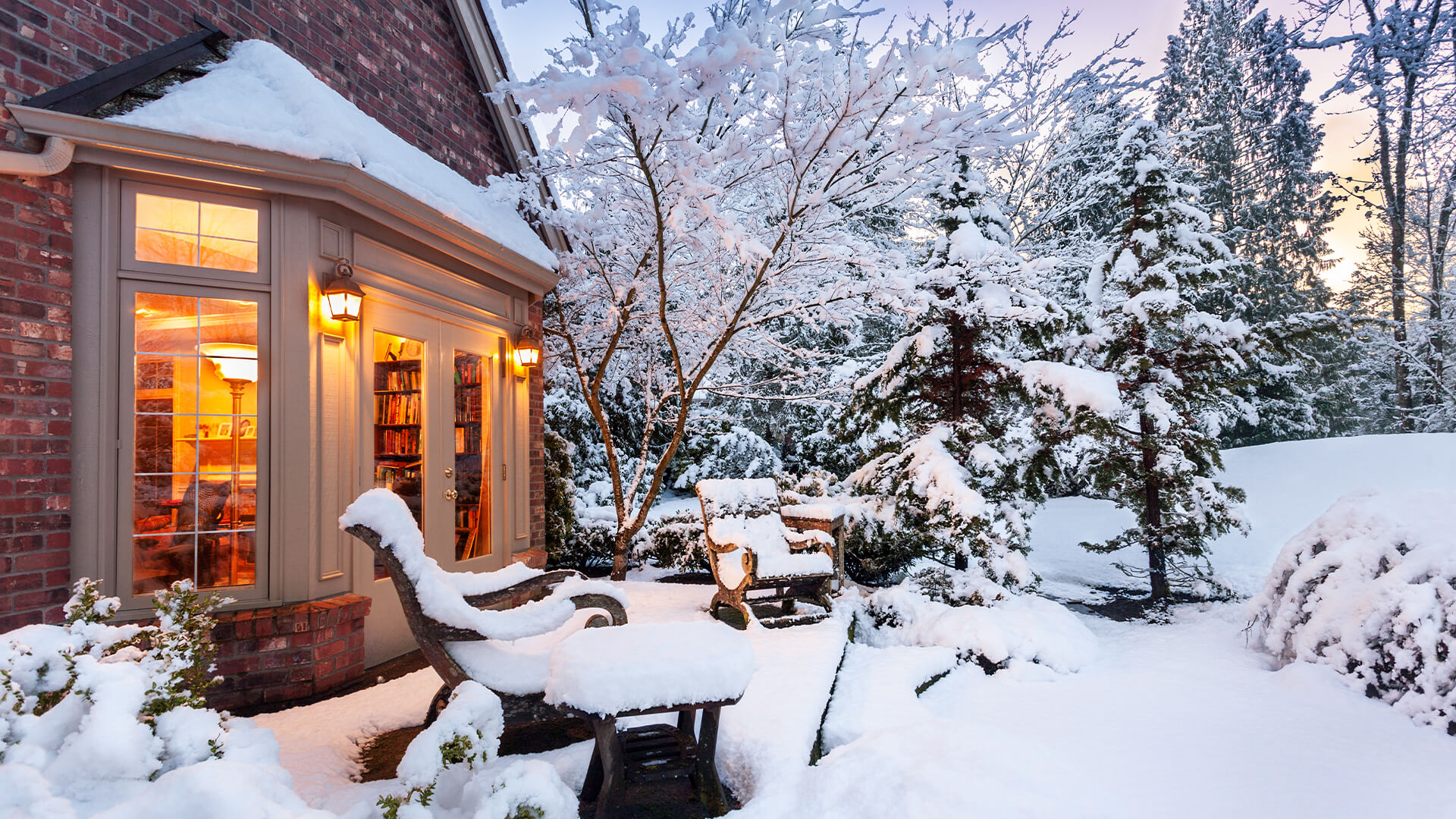Winter weather can be unpredictable – unexpected cold snaps and constantly shifting temperatures can take their toll on plants in your garden. With the hard work and effort invested in your garden over the prior seasons, you don’t want the environmental factors that come with winter undoing all your work. We share a few useful tips on how you can protect plants in winter and minimise damage.
Cover Plants
Depending on what plants you have in your garden will determine to what extent you need to cover your plants.
Cloche your Crop
Covering vegetable patches with a cloche can protect your salad plants and vegetable from frost. Without covering your crop, the winter environment can be too much for your plants in the unpredictable conditions having to face low temperatures, large volumes of rainfall and high winds.
Plant Wrapping
As well as your homegrown crops, wrapping plants susceptible to winter damage can help keep them protected through to spring. Winter conditions can often shock the plant stunting growth in the following seasons.
Young shrubs and trees require protection in the early winters whereas more established trees are often able to withstand the majority of the winter conditions.
To wrap your plants, use insulating materials such as hessian or fleece. Otherwise bracken, straw and polystyrene can also be used to protect your plants from low temperatures and winds. It is recommended you have your plants wrapped before the first frost to protect your plants fully. Typically plant wrapping is done between September and November, depending on the weather forecast.
Add Mulch
Mulching is useful all year round, however in the winter mulch can protect your plants from the winter extremities which can damage them. Mulching acts as an insulation layer over the soil to protect roots against freezing in the cold temperatures. A layer of mulch prevents soil erosion which can expose roots to wind, rain and the cold after heavy rain.
If using biodegradable mulch, this can provide additional benefits such as adding nutrients to the soil to promote growth in spring. We recommend adding mulch in autumn as a barrier to protect your plants from the winter elements. Take care not to get the mulch too close to the plant stem as this can cause the plant to get too wet which can cause other problems such as disease.
Raise Plants & Cover Containers
Insulate Containers
Plants in containers tend to be particularly exposed to the winter elements, they do not have the same level of root insulation that bedding plants have. As a result, insulating containers by wrapping them with bubble wrap, fleece or hessian will help raise the temperature of the soil in the container to prevent roots from freezing and in some cases the container from cracking due to frost.
Raise Containers
Raising container pots off the ground helps prevent the cold temperatures being transferred from the ground to the container pot. This small change makes a noticeable difference not only are the temperatures controlled but raising pots help prevent the containers from sitting in puddles of water after substantial rainfall which can lead to root rot.
Move Plants into Shelter
Many vulnerable plants cannot withstand the elements that occur in wintertime as a result to help them flourish in the following season, moving them into sheltered areas not as exposed to the elements is key in the winter.
Shelter can come in many forms for plants it can be as simple as moving it closer to a wall or fence so that it doesn’t receive the brunt of the Great British weather, moving the plant to a covered area to protect it against the majority of environmental factors in the winter, moving the plant to the shelter of a greenhouse which provides shelter from the cold temperatures as well as wind, rain and frost or in some extreme cases indoors.
Some greenhouses may benefit from additional insulation to help raise the temperature inside. Using bubble wrap or plant wrapping materials to line the inside of the greenhouse can generate additional protection against the cold, external temperatures to help maintain a temperature of 4-5°C. We recommend keeping delicate plants such as perennials in greenhouses over winter to keep them away from low temperatures and frost.
Overwintering
Some outdoor plants benefit from becoming indoor plants over the coldest of months. Herbs such as Rosemary and Tarragon thrive in the warmer temperatures rather than being exposed to the cold as do other plants including hibiscus, geranium and succulents such as aloes.
Biostimulants
Another step to protecting you plants over winter is the use of biostimulants. Biostimulants change the molecule structure of a plant to prevent it from being as susceptible to environmental factors that occur in winter. This means plants are able to withstand winter conditions to prevent damage. They work in harmony with your plant’s own internal system to grow stronger roots and faster recovery from harsh weather conditions. Whether you use biostimulants for fruit and vegetables to gain greater yields or for flowers and shrubs, they can help defend your plant against the harsh conditions of winter.
Written by Richard Salvage, the CEO of Greenman Plant Care, Research Scientist, Biological Sciences, Institute of Global Food Security, Queen’s University.
Richard combines a passion for science with a desire to make a difference. Having previously built and sold one of the world’s most successful contamination control companies, he is now dedicating his time to the development of innovative, scientific based developments which positively impact the world and our environment. Greenman natural biostimulants are groundbreaking formulas for those who care about plant health.




























